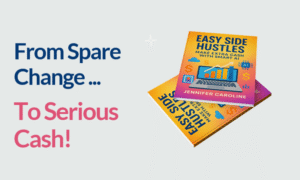Using The Validation Trick to ‘Mind Control’ Your Audience with Social Proof Marketinga

Imagine you’re scrolling through Amazon, unsure of which product to buy. Suddenly, you spot one with a bright orange “Best Seller” badge — and without much thought, you click it.
That’s the power of social proof marketing.
Humans are naturally social creatures. When we’re uncertain, we instinctively look to others for cues on how to act. At a concert, if you’re unsure whether to clap, you wait. But once two or three people start clapping, the entire crowd joins in. This psychological phenomenon is called validation, and it’s a cornerstone of social proof marketing.
Why Social Proof Works
We have a deep-rooted need to belong and feel validated. When we see others make a choice, it reassures us that we’re making the right decision too. That’s why testimonials, user reviews, and “Most Popular” badges are so effective — they whisper, “Everyone else is doing it, and they’re happy.”
But this isn’t just about following the crowd. It’s about building trust. We trust others’ experiences — even the opinions of complete strangers. That’s why customer reviews are often the first thing we read on a product page. We’re subconsciously leaning on the collective wisdom of the crowd.
By tapping into this natural human instinct, social proof marketing can significantly improve your brand’s credibility and boost conversions.
How to Use Social Proof Marketing in Your Business
1. Use the “Bandwagon Effect”
People assume that if others are doing something, it must be the right choice. You can leverage this by highlighting:
-
Large user numbers
-
High follower counts
-
Impressive download stats
Example: Dropbox famously grew their user base by 60% using a referral program. Users got extra storage for inviting friends, which created a viral loop based on perceived popularity.
2. Curate User-Generated Content
Encourage your audience to share their experiences with your product or service on social media. Then, showcase that content on your website, emails, or ads.
Example: Starbucks ran a campaign where customers decorated their cups and posted photos online. The result? Over 4,000 submissions in just three weeks — a masterclass in user-generated social proof.
3. Tell Powerful Customer Stories
Stories are emotionally compelling and help humanize your brand. Share:
-
Customer success stories
-
Behind-the-scenes content
-
Your brand’s origin story
Example: TOMS became famous for its “One for One” model — donating a pair of shoes for every pair purchased. This simple but emotional story turned customers into brand advocates.
Why Social Proof Marketing Matters Now More Than Ever
In today’s crowded marketplace, everyone is trying to stand out. But those who understand and use social proof marketing have a distinct advantage.
It’s not just psychology — it’s smart strategy.
By tapping into our need for validation, you can create a brand experience that feels trustworthy, credible, and worth sharing.
Final Tip: Add visible social proof throughout your marketing channels — on your website, in your emails, and across social media. When done right, it doesn’t just influence — it converts.















